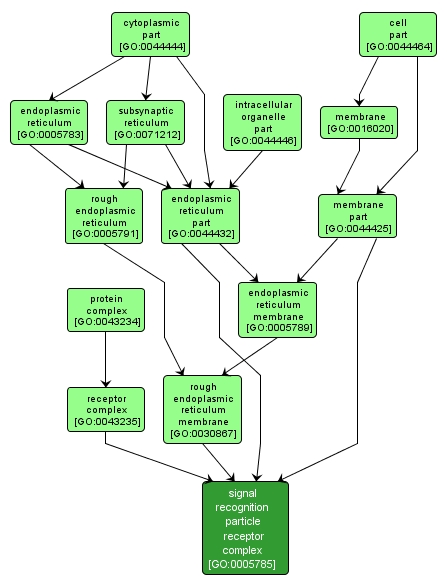| Desc: |
A transmembrane heterodimeric protein located in the membrane of the rough endoplasmic reticulum. Both subunits contain GTPase domains with which signal recognition particle interacts. In the presence of GTP and SRP receptor, SRP is released from the ribosome-nascent chain complex. |














